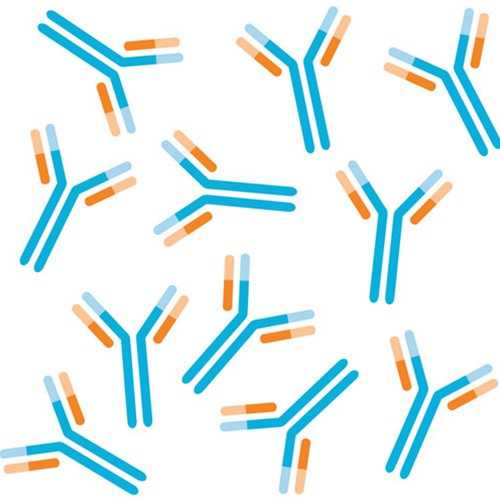Anti-Lobster iGluR1 Antibody
Rabbit polyclonal antibody was raised against two non-overlapping peptides TGEGFDIAPVANPW and EYPTNDVDKTNFN and recognizes lobster Ionotropic glutamate receptor (iGluR1).
Highlights:
- Reacts with lobster iGluR1
- Binds to the c-terminal region
- Suitable for Western Blot and Immunocytochemistry applications
Ionotropic receptors or ligand-gated ion channels are a group of transmembrane ion-channel proteins which open to allow ions such as Na+, K+, Ca2+, and/or Cl- to pass through the membrane in response to the binding of a chemical messenger, such as a neurotransmitter. Glutamate receptors are synaptic and non synaptic receptors located primarily on the membranes of neuronal and glial cells. Glutamate receptors are responsible for excitation of neural cells, and are important for neural communication, memory formation, learning, and regulation.
From the laboratory of Timothy S. McClintock, PhD, University of Kentucky.
Rabbit polyclonal antibody was raised against two non-overlapping peptides TGEGFDIAPVANPW and EYPTNDVDKTNFN and recognizes lobster Ionotropic glutamate receptor (iGluR1).
Highlights:
- Reacts with lobster iGluR1
- Binds to the c-terminal region
- Suitable for Western Blot and Immunocytochemistry applications
Ionotropic receptors or ligand-gated ion channels are a group of transmembrane ion-channel proteins which open to allow ions such as Na+, K+, Ca2+, and/or Cl- to pass through the membrane in response to the binding of a chemical messenger, such as a neurotransmitter. Glutamate receptors are synaptic and non synaptic receptors located primarily on the membranes of neuronal and glial cells. Glutamate receptors are responsible for excitation of neural cells, and are important for neural communication, memory formation, learning, and regulation.
From the laboratory of Timothy S. McClintock, PhD, University of Kentucky.
| Product Type: | Antibody |
| Accession ID: | AY098942 |
| Antigen: | iGluR1 |
| Molecular Weight: | 106.4 kDa |
| Clonality: | Polyclonal |
| Reactivity: | Lobster |
| Immunogen: | Two non-overlapping peptides: TGEGFDIAPVANPW and REYPTNDVDKTNFN |
| Species Immunized: | Rabbit |
| Epitope: | C-terminal region |
| Buffer: | Antisera |
| Tested Applications: | WB 1:10000, Immunocytochemistry |
| Storage: | -80C |
| Shipped: | Cold Packs (Domestic, Overnight); Dry Ice (International) |
- Ruben S, Hollins B, Brock SE, McClintock TS. 2004. Primary Culture of lobster (Homarus americanus) olfactory sensory neurons. Chem. Senses 29: 179-187.
- Hollins B, Hardin B, Gimelbrant AA, McClintock TS. 2003. Olfactory-Enriched transcripts are cell-specific markers in the lobster olfactory organ. The Journal of Comparative Neurology 455:125-138.
If you publish research with this product, please let us know so we can cite your paper.


